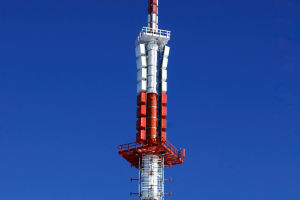Sowing crops in the field is more than just scattering seeds — it's a science and art that can make or break a harvest. Whether you're a seasoned farmer or an enthusiastic beginner, understanding the essentials of sowing is key to cultivating a productive field.
From timing to techniques, here’s everything you need to know about ensuring your crops thrive!
Timing is Everything: When to Sow Your Crops
Knowing when to sow your crops is critical. The ideal time depends on the type of crop, the climate, and the soil condition. Some crops, like wheat and barley, do best when sown in the cool months of autumn, while others, such as corn and sunflowers, prefer the warmer spring and summer seasons. Pay attention to your local weather patterns and frost dates to make sure your seeds go into the ground at just the right moment.
Preparing the Field: It All Starts with the Soil
Healthy crops come from healthy soil! Before sowing, it’s essential to prepare the field properly. Begin by plowing the land to aerate the soil and remove weeds, then follow up by leveling the surface. Depending on the crop, you may also want to add compost or fertilizers to boost soil nutrients. Testing your soil’s pH and nutrient levels can provide a clearer picture of what your crops need to flourish.
Cultivation of crops
Video By Harish Asar
Choose Your Sowing Method: Direct or Transplanting?
There are two main methods of sowing crops: direct sowing and transplanting. Direct sowing involves planting seeds directly into the field, ideal for crops like beans, carrots, and corn. Alternatively, transplanting is used for crops such as tomatoes and peppers, where seedlings are first grown in nurseries and later moved to the field.
Essential Tips for Successful Sowing
Tip #1: Space Your Seeds Correctly
One of the most common mistakes beginners make is either overcrowding seeds or spacing them too far apart. Check the seed packet instructions or crop guidelines for the proper spacing. Too many seeds too close together will compete for nutrients, while too much space might reduce the yield.
Tip #2: Watering Wisely
Seeds need moisture to germinate, but over-watering can drown them. Use a gentle spray to keep the soil evenly moist, especially in the first few weeks. Drip irrigation systems work well to maintain consistent moisture without overdoing it.
Tip #3: Use Mulch to Retain Moisture
After sowing, cover the area lightly with mulch to help retain soil moisture, keep weeds down, and regulate soil temperature. Organic mulch, like straw or grass clippings, is ideal.
Must-Have Equipment for Sowing Success
Having the right tools can make a world of difference when sowing crops. Here’s a roundup of must-have equipment that every farmer needs to ensure optimal growth and productivity:
Seed Planter
For larger farms or fields, a seed planter can save you time and effort by ensuring each seed is spaced evenly and planted at the right depth. This tool is invaluable for high-efficiency sowing, especially with crops like corn and beans.
Hand Trowel
A simple yet indispensable tool for smaller-scale sowing. It helps you dig precise holes for each seed and measure the right planting depth.
Garden Rake
Before sowing, use a garden rake to level and smooth out the soil surface. This helps remove debris and ensures even seed distribution.
Soil Thermometer
Seeds germinate best when the soil is within the right temperature range. A soil thermometer helps you monitor the ground to ensure it's warm enough for your crop variety.
Sowing crops successfully requires more than just dropping seeds into the soil. It’s about timing, preparation, and using the right techniques. Armed with these tips and the best equipment, you’ll be well on your way to enjoying a productive and bountiful harvest season. So, Lykkers gear up, get your hands dirty, and watch your crops thrive!


